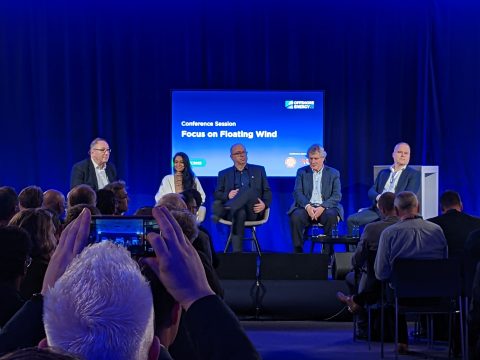
Floating offshore wind ambitions write cheques supply chains can’t yet cash
Focus on floating wind panel discussion Emma Dailey
The European Union (EU) has as a target, to reach 300 GW of offshore wind energy by 2050, in its Strategy on Offshore Renewable Energy. Developing floating offshore wind farms (FOWF) increases the potential surface available for generating wind energy.
Want to read more?
You have read all of your free premium articles for this month. Please become a subscriber to keep reading.
Subscribe now!
Take advantage of our exclusive offer to get full access to all premium content.





